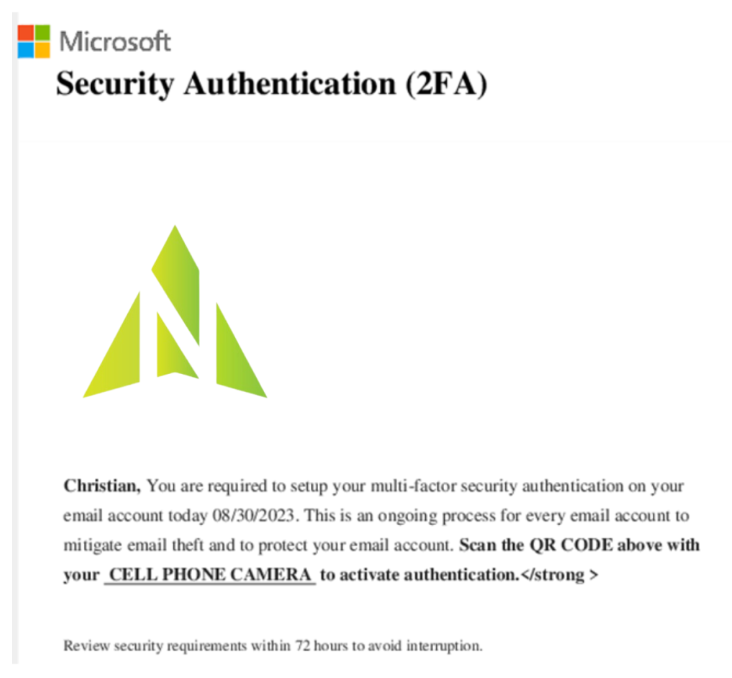Hello there, Reader. I don’t know about you, but when a scam email lands in my inbox, I usually think to myself, “how ON Risa will that galactic garbage fool anyone?”. But this week, as I was slurping my morning Raktajino, I received a scam that did make me think twice. Here’s the email…

We’ve substituted the QR code with our logo to protect you on this example.
Hello, Reader. I don’t know about you, but when a dubious email lands in my inbox, I often find myself pondering, “How on Risa would anyone be taken in by such galactic nonsense?” However, this week, while sipping my morning Raktajino, I received a deceptive email that did give me pause. Here’s the email in question:
Now, in the realm of scam emails, this one doesn’t rank too poorly. I can imagine that some unsuspecting individuals might be duped by its surprisingly authentic appearance. Yet, upon closer examination, there are several unmistakable signs that this email is indeed a scam. Let’s dissect it.
Subject Line
An immediate red flag. The subject line was ‘Northstarit IT.’ Sloppy work, Scammer. Quite sloppy. At the very least, get the company name right.
Microsoft Logo
Even a Nintendo 64 wouldn’t produce such pixilation. One would think Microsoft has the resources for higher-resolution images, right?
“Cell Phone”
Unless I’ve been transported to an American detective show from the 1980s, no one in the seven galaxies refers to it as a “cell phone.” Step up your game, Scammer!
HTML tag
If you don’t know what an HTML tag is, I am not surprised, I only do from a training course of years ago. For most you shouldn’t see them if they are coded correctly. So the appearance of “</strong >” was another red flag!
Fonts
No reasonable expectation that Microsoft’s marketing department would permit an email to go out with inconsistent fonts. This might be an easy detail to overlook, but it’s another unmistakable red flag.
“That email might have fooled me, Captain.”
You’re not alone. As scam emails continue to appear increasingly authentic, it’s advisable to delete anything that even remotely raises suspicion.
Naturally, scammers aren’t limited to email; they’ll also try their luck with calls to your CELL PHONE (ugh).
If you would like to seek additional guidance on recognising scams or wish to speak with our team about implementing safeguards to thwart cybercriminals from breaching your network defences, contact us on 01903 25 99 23 for a free chat.